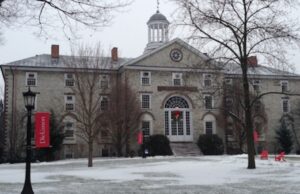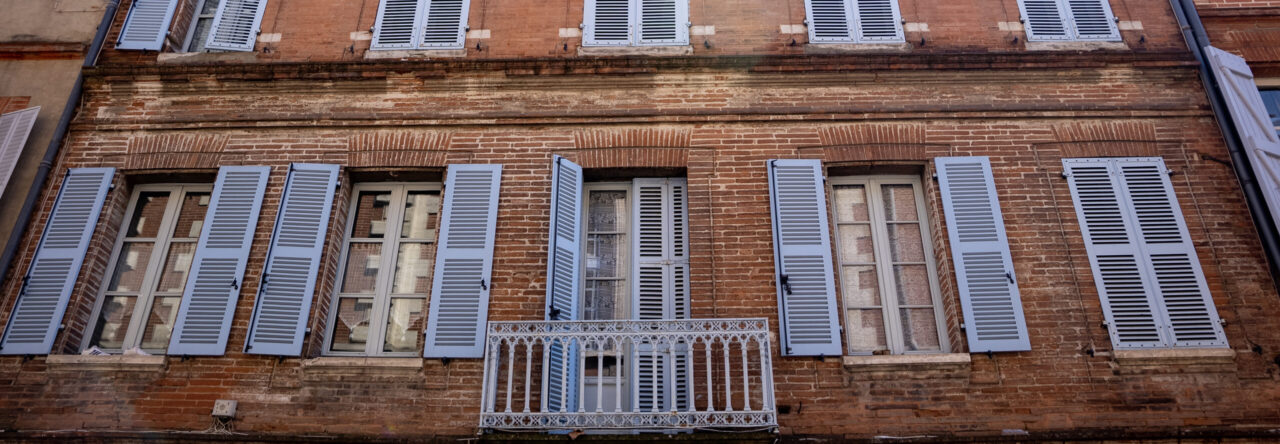

This semester in Toulouse, not only are the Dickinson students from all over the U.S., i.e.: Ohio, Pennsylvania, New York, Maryland, California, but we also have international students who help bring a wide array of perspectives during class and small group discussions. A topic which the group finds particularly intriguing is the comparison between French and U.S. education. For this short article, we will explain these differences by sharing firsthand experiences. The most striking differences take place in the classroom, as well as the physical structure of the campus’ and navigating the support system for students with accommodations. Each one of the articles in this journal are experiences and observations that have informed the Dickinson students on just what it means to be an international student in France. The reflections are those of cultural differences seen through the eyes of students who study in the United States and are able to use cross-cultural perspectives to understand our word’s education systems.
LEARNING FACILITIES
Since the start of COVID in early 2020, my outlook on learning accommodations while taking online classes and while living on my university’s campus have drastically changed. I always felt supported by Dickinson College and never thought about how other institutions give academic accommodations or, even, how universities in other countries do it. In fact, in Fall 2020, while taking classes completely online, I never felt the need to discuss my learning accommodations as standards for tests, quizzes, and turn-in homework had completely changed. In-person, lengthy, supervised exams turned into open note, 48+ hour timeline tests, and sometimes even adding bonus point options.
During my first week of school at Sciences Po, Toulouse, I immediately realized I was no longer at a small American liberal arts college. Expectations of the students and their work throughout the semester seemed completely ambiguous comparatively, and I had no idea there was almost no concept of learning accommodations or academic support in a larger French university. Nonetheless, I was able to work with the Dickinson center to help talk to my professors if an issue did arise. Luckily, the professors were extremely accommodating. I partially think this is because COVID learning has changed standards for perhaps a stricter education system like the one in France. Most professors themselves have seemed to have taken advantage of the flexibility in testing and class time which COVID has given the education world. While this makes me happy for those who do need extra assistance with learning, I hope these changes in standards remain and are even applied to those who do not have learning difficulties.
AUTONOMY AND LEARNING IN CLASS AND AT HOME
Courses in France as well as work given by professors have been a huge adjustment compared to what we are used to in the US. The French system is well known for its difficulty and strictness of courses, professors, and work in general, however, as students were not aware what that meant. While in the US, we were used to being given a great amount of work, at times feeling like there were not enough hours in the day to do the work. Here in France, we were faced with many more courses that lasted longer. In general, each class would be held once a week (rarely twice) lasting between 1 and a half to 3 hours. Professors rarely give work to be handed in, there are usually big assignments throughout the semester compared to daily work. Most classes are lecture based and not led by discussions in class, coming from a Liberal Arts College like Dickinson, this was a huge adjustment.
French students are also more used to working on their assignments throughout the semester. They are also aware of how to prepare for the dissertations that they will be given at the end of the semester. Therefore, while it looks like there might not be much day-to-day work to do, French students are constantly studying and preparing for their big assignments independently. This is a norm in the French educational system as well as their strict rules on how work should be submitted. The dissertation is one of the assignments that best describes the French system as it is rigid, strict and must be done in a certain manner. It was shocking to find that at the end of the semester, students have to reflect on what they have done and write a dissertation on a topic a professor picks based on their course materials over the semester.
STUDENTS EXPERIENCES OF MOBILITY PROGRAMS
As students studying abroad in France, we interact with many students from all over the world, most of the students are a part of a program called Erasmus. This program is offered as a cultural exchange, and a way to earn credits for one’s respective university. Erasmus is funded through institutions contributing to the European Commission and in return students are granted monthly stipends for living. The overall goal of the program is to have university students’ benefit from other cultures and gain international experiences through their education. It is clear that many students benefit from the Erasmus program and participate in a cultural exchange, being that it is often expected by their university, or in the culture of education. Unlike in the United States, in which studying abroad is seen as a privilege rather than an expectation. There are opportunities for studying in different countries, but there is a wide range of accessibility to such programs depending on the university. It is understandable why students in the United States and students living in a European nation experience varying levels of mobility during their university years. European universities benefit from the proximity and accessibility of the continent, as well as the reciprocated relationship between many of the nations.
The Erasmus program allows students to experience cultural exchanges and mobility across countries in a direct and supported way. Students gain the benefits of being supported financially, to some degree, as well as the programs connections to housing, and education. The educational exchange may not be greatly different from their home nation, but in this exchange, they are able to learn about new norms, different languages and a different way of daily life at a young age. University students in the United States do not have the same access to mobility, it is often that one must plan for studying abroad prior to choosing a university. This is not always the case, but seeing as universities widely differ in their access to study abroad programs it can often mean students must plan in advance for the opportunities. Although students in the U.S. do not always study abroad during their college years, it is common for students to attend a school outside of their home-state/region. This means they are able to experience a cultural shift, although it may not be as drastic as being in a different country. Students in European nations have access to universities in proximity to their home regions and through the Erasmus program they have access to a plethora of schools outside of their domain.
THE STRUCTURE OF CAMPUSES AND LECTURES
All students in the Dickinson Program for the fall 2021 semester are studying at the Toulouse Institute of Political Science. Although this University is within close proximity to Toulouse Capitol 1 University, the structure of the campus is limited to a 4-floor building. One of the big questions posed to us throughout our stay has been the question of the “big American campus,” referring to the big green quads and large classrooms in various buildings on a concentrated piece of land. In France, this is obviously not the case, as shown by the campus Science Po. This limited space has resulted in international students following courses at a distance due to the lack of classrooms. The campus offers a small café in the same building, but the library and cafeteria are a part of the larger campus across the street. In comparison to the campus of Dickinson and those of America, it’s hard to really qualify the campus of Science Po as a “campus” in those terms. However, in France, it is very much a campus, even if there are those that are bigger such as Jean Jaurès and UT1.
In addition to the physical structure and layout of the campus, the structure or the framework of the teaching differs greatly from the style of the United States. As mentioned in the previous argument: “autonomy and learning in class and at home,” the French system is rigid and strict, but why? The structure of the courses highlights this, as Professors organize courses oriented on content and systematic ways of doing things. There is less of a rapport between student and professor, less interaction between student and student. Independence is the result of a structure based upon two or three assignments per course that count for your entire grade. However, though it may seem “loosely structured,” the ways in which assignments are completed is where the strictness appears. Professors rarely call roll as the semester continues, and never comment on absences, which in turn, results in students skipping courses, and ultimately add to the space between student and professor, student and student.
CONCLUSION
Our experience has been shaped by the educational system whether it be through the expectations of students and professors, the accessibility of learning accommodations, the cultural exchange with Erasmus students, and the structure of the university itself. All of these aspects of learning contribute to our living abroad experience and plays into how we view French and American intercultural experiences. We have seen that the differences in accommodations for students are vast, yet the influence of Covid has actually aided the progress in this domain. We also see the stark differences in mobility of students from nations as part of Erasmus, and other students. How the ability to study abroad is extremely encouraged and made possible by a network outside of a university. Specifically, and most drastically we noticed how class structure and student preparation, as well as the relationship between students and professors is a large shift from what we are used to in the US. And finally, the physical structure of university and the aspect of “a campus” reflects the organization of a university and reflects new differences as well

Leave a Reply